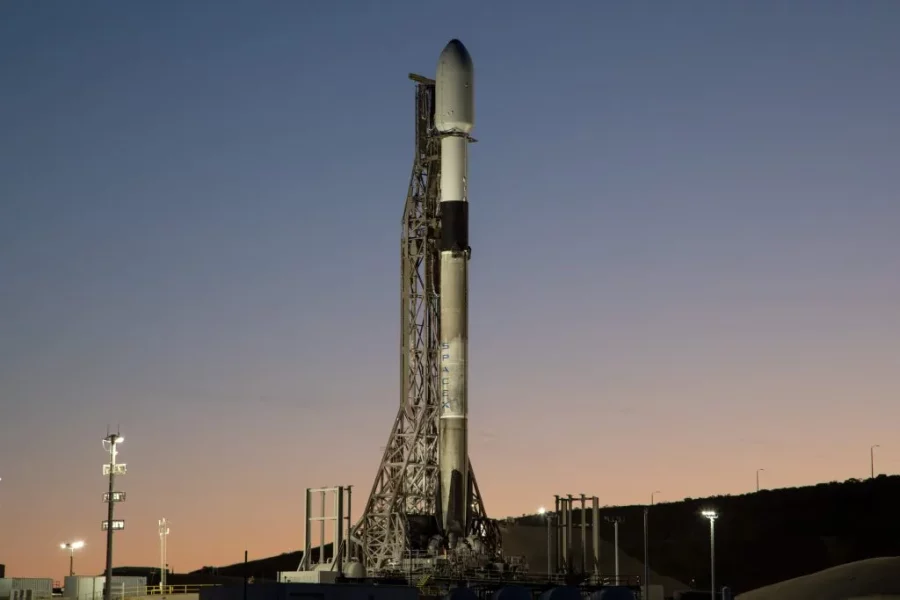The Space Development Agency will start launching its next batch of satellites in March or April 2025, six months later than originally planned, but agency director Derek Tournear suggested he may try to increase the pace of launches after that to get back on schedule.
Tournear offered the new timeline along with a host of updates on his organization’s low-Earth orbit constellation during an event with AFA’s Mitchell Institute for Aerospace Studies on Nov. 19, including plans for future missile defense and position, navigation, and timing capabilities.
SDA first started launching what it called its “Tranche 0” satellites in April 2023 and finished in February 2024—a process that also included several months of delays. All told, Tranche 0 includes 29 data transport and missile warning/tracking spacecraft in orbit to demonstrate their concept for a large LEO constellation.
Tranche 1, consisting of more than 150 operational satellites, was supposed to start going up in September, followed by a launch every month for 10 months. But at the Defense News Conference on Sept. 5, Tournear revealed that the first launch would be pushed back to “around the end of this calendar year,” citing problems producing necessary parts at scale.
Two months later, Tournear pushed the timeline back once again to March or April, saying suppliers had been overly optimistic in how fast they could scale production and solve supply chain delays, particularly for key components like optical communications terminals and encryption devices.
“Tranche 0 was just getting the parts in hand. Tranche 1 is building up your manufacturing capability, which always goes slower than people anticipate,” Tournear said.
Moving forward, though, Tournear said vendors have started hitting their production goals, and “we have high confidence that the schedule we have now is going to hold.”
With satellites now being assembled “daily,” Tournear also suggested SDA may look for other ways to get back on schedule—and live up to its motto of “Semper Citius,” or “Always Faster.”
“We know SpaceX can launch faster than once a month, so we can bring this in,” Tournear said of the launch schedule. “The space vehicles will be ready faster than that once we start the initial launching, but it’s just a matter of how fast will it take us to get through launch and early operations and pull that in.”
To that end, Tournear said he would be willing to accept and store completed satellites from contractors if they are ready before a launch vehicle is.
SpaceX has already been awarded all the launches for Tranche 1, receiving orders in 2022 and 2023, and the company has come to dominate the market with its rapid cadence—it has launched 10 times in November already, including three launches in two days.
Regardless, Tournear said all of Tranche 1 will launch over 10 months at a “maximum.” That timeline would have launches extending into 2026—the same year Tranche 2 satellites are supposed to start going up.
Tranche 3
While Tranche 1 satellite production is ramping up and design reviews for Tranche 2 have finished, SDA is already moving forward on Tranche 3, with plans to officially ask industry for proposals starting in January 2025.
Each tranche is meant to include new easily available technologies and capabilities, a process officials call “spiral development.” For Tranche 3, that will mean a few things.
Among the 150 or so data transport satellites, a “fraction” will include a new “lightweight” position, navigation, and timing signal, Tournear said.
The Pentagon has been investing more and more in backups and alternatives for the Global Position System satellites, and Tournear said the new signal coming from SDA’s satellites will help in that regard.
“The details of that are still being worked out. We’re working very closely with the Army, because the Army is the one that would be fielding the receivers for these things,” he said. “And so I can’t go into more details, primarily because it hasn’t firmed up until we get more alignment with what the Army actually wants us to demonstrate and fly on Tranche 3. But it’ll be a very small signal in an L- or S-band that we’ll demonstrate.”
Meanwhile, Tournear also wants up to nine satellites in Tranche 3 that can do both missile warning and missile defense.
“Missile warning is launch detection: the old school, ‘now we can affect mutually assured destruction. Let the President know where we’re under attack.’ Tracking is not only can we tell you that the missiles have been launched, but as they maneuver, we can tell the impact point, so we can tell the people downrange to prepare theater air defenses, or in worst case scenario, at least tell them to prepare for duck and cover,” Tournear said. “Defense takes that one step further and says, not only can we detect the maneuvering missiles, we can detect them to such accuracy that I could send that data down to an interceptor with no other sensors needed.”
Tranches 1 and 2 will include a few satellites each that can do missile defense, and Tranche 3 will look to build on that by combining missile launch and missile defense on the same satellite.
“We’re really interested in hearing from industry on what those capabilities are,” Tournear said.
